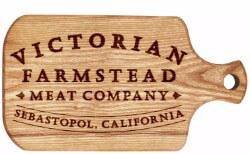Dear Friends,
Rains during the last week have heralded the beginning of our winter grazing season. The Los Vaqueros Watershed outside of Brentwood has picked up a few inches of rain and the hills have really started to turn green. We will be moving our cattle from pastures in the Delta up to the hills in the next couple of weeks, where they will spend the winter in preparation for the first California harvest of 2015.
Meanwhile, beef from the first harvest off of our Hawke’s Bay, New Zealand ranches is now on board a ship in the Pacific, now scheduled to arrive at the Port of Oakland on December 10. Bill has spent the last week in the country visiting the ranches and processing plant. Don made the same trip with his wife Anna last spring, when we brought in our first shipment of beef. Our lead butcher Oscar Yedra will likely make the trip this coming winter to further streamline our processing and make sure the cut specifications match what we do here.
Genuine grass fed beef grown in New Zealand is something we have had our sights set on for many years, and this will be the first winter season that we have been able to offer it fresh on a weekly basis. For us this is the next step in our mission to provide great-tasting, truly grass-grown and finished beef from the places where it is best in season. With the benefit of modern, efficient transportation and packaging, we are expanding on a pastoralist strategy that is thousands of years old: keeping livestock on the best forage through the seasons and bringing animals to market when they are in peak condition. For those in our ranching family in the Great Basin that might mean trailing cattle 60 miles between their low-elevation winter pastures and high mountain summer range. Here in northern California we graze livestock on some of the best native rangelands in the world during the winter and spring months, moving for the summer to river-irrigated pastures in the Delta or snow-fed meadows in the shadow of Mt. Lassen.
Why all of this movement? It’s all about the nutritional content of the forages at different times of the year in different geographies. During mid-winter in California, the grass may be green in the hills but its nutritional content is low and diluted, in part, by a large quantity of water, and grows slowly with the shorter, cool days and long nights. Cattle grazing only grass will remain healthy during this wintertime green season, but will not put on extra fat. Only at the tail end of the growing season in the hills do the grasses begin to produce seed as they set up for the long dry season – annuals dying off and making next year’s crop, and perennials going dormant. Those drying, “hard” grasses – with concentrated energy and protein – are powerful enough to produce fat cattle for a brief period of time in May. From June to October, we look to optimize the lush grasses of low Delta pastures and high mountain meadows to harvest cattle that are at their peak moment coming off of rich grasses and legumes.
Harvesting fat cattle from New Zealand – cattle raised by experts who have the breeds, forages, and careful management to make great-tasting beef – is a sensible complement to our work in the western U.S. With the opposite growing season of the Southern Hemisphere, those rich forages can produce great beef during California’s winter. When he returns, Bill will have some of his travels to share with all. We really look forward to those conversations with each of you.
Don McNab looking at future fat cattle – at the time still at their mothers’ sides – in Hawke’s Bay, NZ. Spring 2014.
Thank you for your continued support, enthusiasm, and friendship.
Very best,
BN Ranch
Gareth, Alex, Nicolai, Fadia, Amilcar, Mauricio, Adrian, Oscar, Renato, Don, Bill, Phil, and Steve

